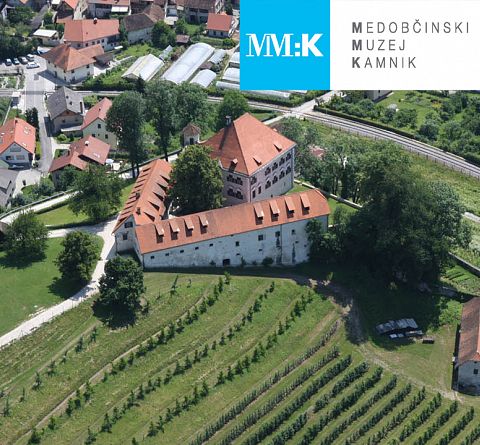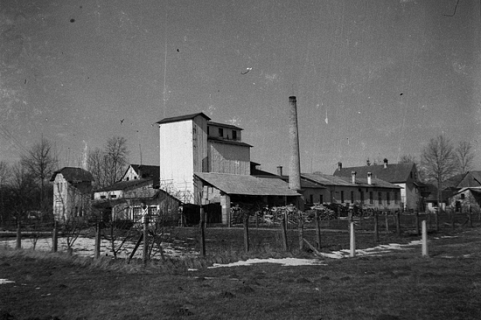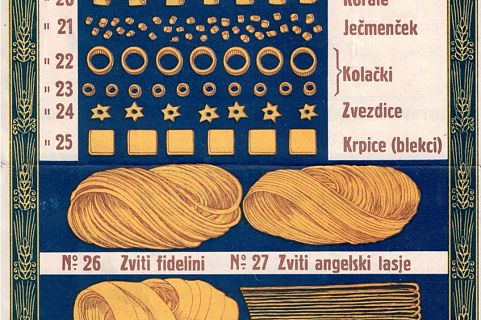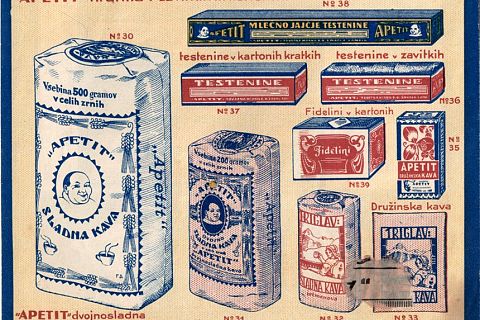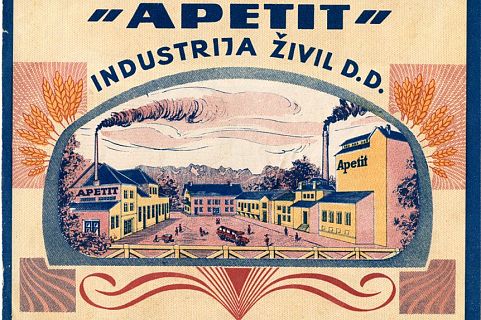Pasta and coffee
About the Triglav Pasta Factory from Šmarca near Kamnik
Yes, sometimes we were even more self-sufficient in Kamnik than we are today. In Šmarca, they made pasta and even roasted coffee.
The plant’s origins date back to the time before World War I, when the Livestock Federation of Šmarca organized the processing of fruit into jam and later added pasta production. After the war, they became independent and organized as a company Triglav. A mixer, roller and press were purchased to produce the pasta. They also built a coffee roaster with a fifteen-meter chimney, which at best worked even in three shifts. But in 1925 they got into trouble and stopped operating. They were bought by Viktor Vokač and the factory was restored. Because they were constantly having trouble supplying electricity, in 1938 they built their own power plant only a kilometre away. Production began to expand. As can be seen in their catalogues of the time, 29 different types of pasta were made, say and write – from the number 1, under which ordinary macaroni is found, to the number 29: straight angel hair suited for soups.
The advertising campaign of the Triglav factory from the 1930s was very prophetic – when you purchase a certain amount of their products, you received a red slip – a prize draw coupon that we are not familiar with, unfortunately.
Wheat flour for pasta was bought mainly in Banat in Vojvodina, and came to the factory by rail. The largest orders were for the military – at that time whole sheets of noodles were drying out in the open air in the sun, on special huge tarpaulins. The roaster was also full – roasted either barley, sometimes coffee beans – it smelled all the way to nearest Menges and Kamnik. They produced 190 tonnes of wheat flour pasta and 90 tonnes of barley and rye coffee substitutes a year, employing 15 workers. The products were mainly sold to wholesalers in nearby cities. They even had a trademark – Appetite!
The factory continued to operate with reduced capacity even during the war and until 1948, when it was nationalized and became part of the Kamnik Food Industry. We remember the Triglav Šmarca Pasta Factory until May 1963, when the machines were moved to Kamnik. The factory buildings continued to stand for several years, then were demolished.
Marko Kumer



